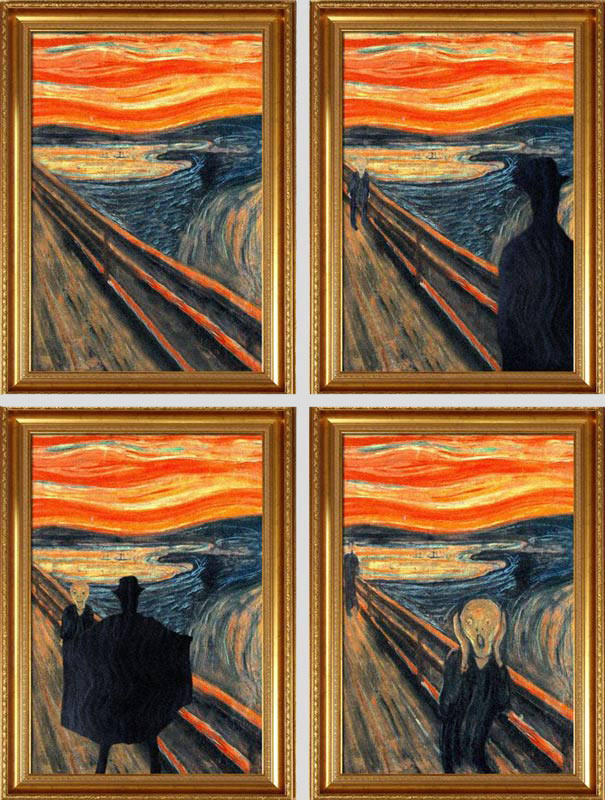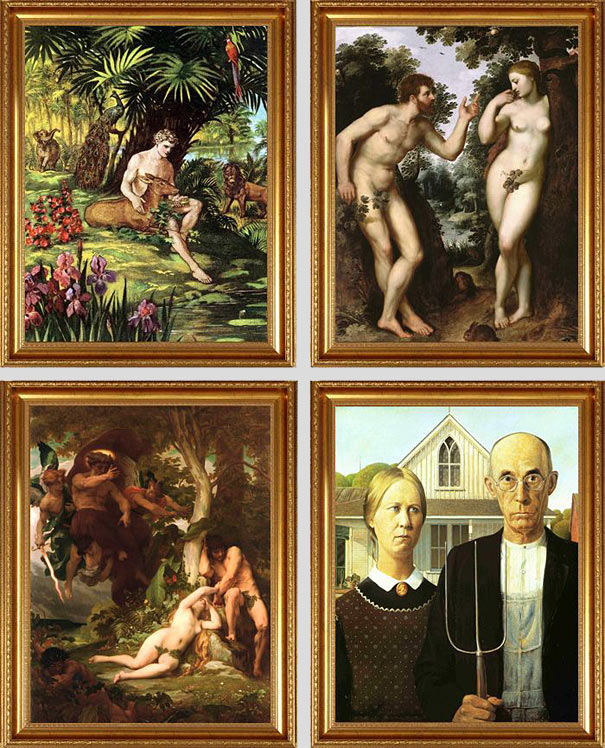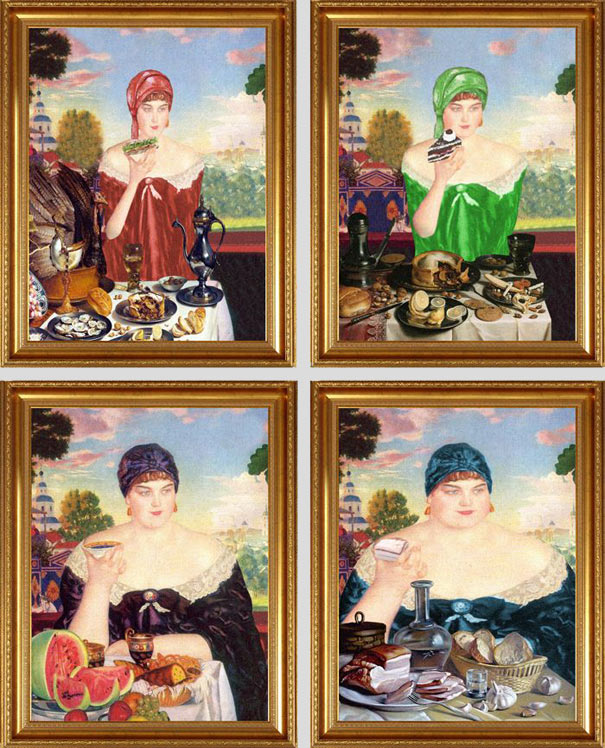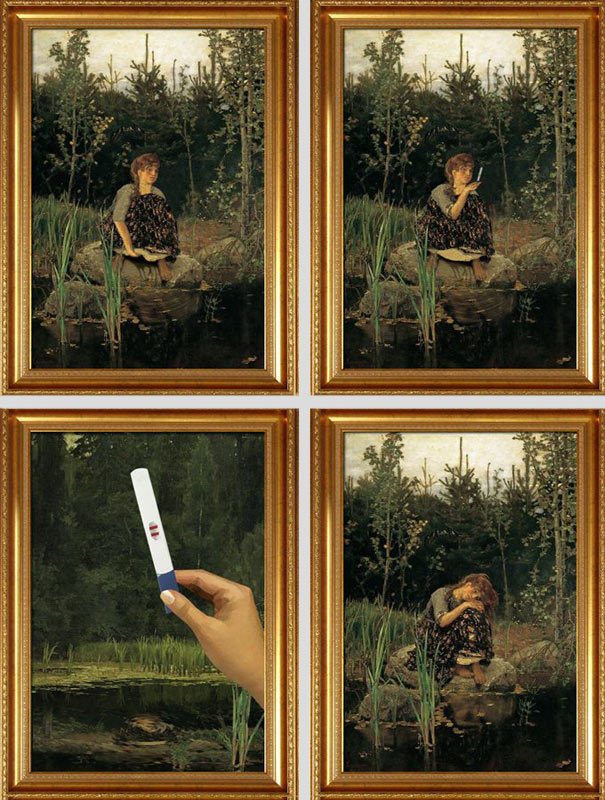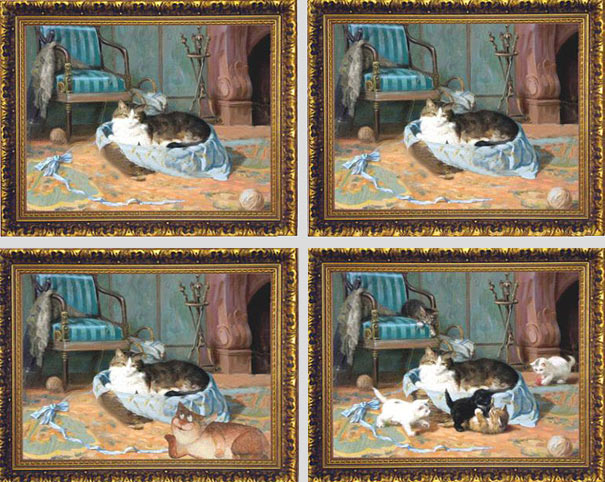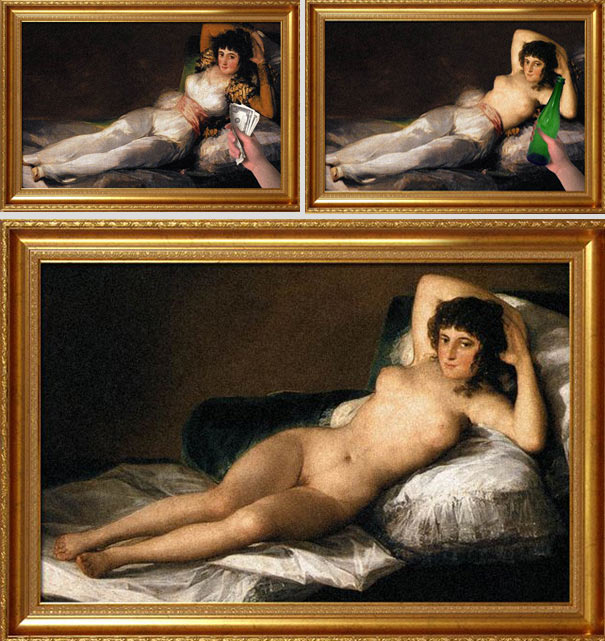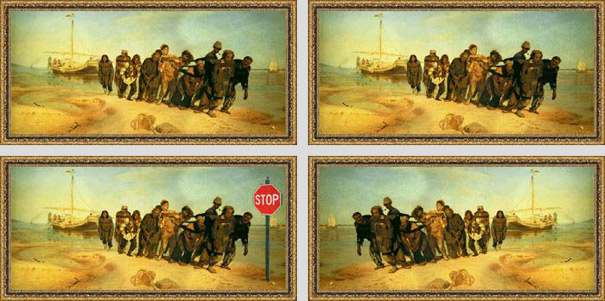Pan’s Labyrinth and the Sanctity of Disobedience
October 29, 2010 ·
Guillermo del Toro, dir. Pan’s Labyrinth. Warner Bros. Pictures International, 2006.
By Davey Morrison Dillard
Writer-director Guillermo Del Toro’s film Pan’s Labyrinth (2006) follows the frightening and fantastical journey of a young girl, Ofelia, through a series of magical adventures, set against the backdrop of the real-life horrors of the Spanish Civil War. Del Toro frames Ofelia’s story with, essentially, a mythological conception of the Plan of Salvation. The film begins with voice-over narration:
A long time ago, in the underground realm, where there are no lies or pain, there lived a Princess who dreamed of the human world. She dreamed of blue skies, soft breeze, and sunshine. One day, eluding her keepers, the Princess escaped. Once outside, the brightness blinded her and erased every trace of the past from her memory. She forgot who she was and where she came from. Her body suffered cold, sickness, and pain. Eventually, she died. However, her father, the King, always knew the Princess’ soul would return.
Spiritual royalty, lost in a fallen world where she is prone to the frailties of mortality, separated from her pre-Earth memories by means of a “veil,” Ofelia discovers and accepts her divine identity by navigating a series of moral complexities, in an attempt to reclaim her heritage and return to live with her true father, the King. This is the basis for a story that takes the moral logic of a uniquely Mormon conception of the Fall of Man, and extends it to an Abraham and Isaac narrative. The result is powerful, and the implications profound.
Mormonism holds a unique view of the story of Adam and Eve in the Garden of Eden. While a variety of interpretations exist within Mormonism, Latter-day Saints tend to believe, more than other Judeo-Christians, that Eve’s partaking of the fruit was less a momentary vulnerability to temptation than it was the wise and courageous decision of a strong woman choosing to take on mortality in the face of pain, death, and difficulties. A poem by Sarah E. Page, “Coring the Apple,” published in Mormon Artist magazine, eloquently expresses this view:
Instead of the thorn,
Hast thou found honey?
I would like to ask Eve someday
What she saw in the apple.
Before she chose
The fire-stung glory of mortality,
Did she pause for even the space of a breath,
Tremble at the bruise of pain, the sharpness of the briar?
Perhaps she sensed the hope nestled star-like
In the core of the fruit
And so risked all she was for the quickening–
The promise of the seed dreaming deep in the loam.
I would like to ask Eve someday
What she saw in me.
The “commandment” not to eat of the fruit, then (the word “commandment” is used more in discussions of the Genesis story than it is in the actual account of it), is less a commandment in the traditional sense, and more a statement of cause and effect: “For in the day that thou eatest thereof, thou shalt surely die” (Genesis 2:17). In God’s plan, partaking of the fruit was essential, but it was to occur only when Adam and Eve had matured to the point that they were able to make the decision for themselves, and to take upon themselves the consequences of mortality. This understanding of the Adam and Eve story celebrates the innate individual spiritual conscience—the Light of Christ—capable of making significant moral choices even when they may seem contradictory to the commandments of God Himself. This is a radical and profound re-envisioning of a classical myth. The Mormon Adam and Eve are gods in embryo indeed—their spiritual and moral instinct bears even greater weight than a perceived commandment.
This dichotomy between moral reasoning and unthinking obedience is central in Pan’s Labyrinth. The film’s villain, Captain Vidal (also Ofelia’s stepfather), is a foil to the celestial cosmology of the fantasy world—where Ofelia is the spiritual heir to a glorious throne, Vidal is the dark lord of a corrupt land. Ofelia must resist Vidal’s evil—and, ultimately, overcome it with good—in order to save herself and redeem Spain.
Throughout the story, Ofelia is presented with a series of tests, administered by a faun (the literal translation of the title is Labyrinth of the Faun); the faun acts as an intermediary between Ofelia and her father, whose existence she must take on faith. For the first test, she is asked to retrieve a key from a large dining room filled with delicious food without touching or tasting it—“Do not eat of the fruit,” she is told, in effect. The Ofelia in this scene is, in many regards, a traditionally Christian Eve—she disobeys and eats a single plump, juicy grape, and so unleashes a terrifying monster when she “partakes of the fruit.” She escapes the creature’s clutches and returns safely with the key, but the faun’s wrath is kindled—and, through her ignorant act of disobedience, she has very nearly forfeited her royal heritage.
These challenges Ofelia faces in the magical world are juxtaposed against a backdrop of the all-too-real horrors of the Spanish Civil War, in which she finds herself mired. In the woods surrounding Captain Vidal’s house—even in the household itself—a resistance movement has been building. Dr. Ferreiro, a medical doctor who works for Vidal—and who is also an undercover force for the resistance—is presented with his own moral choice, one that once again echoes that of Adam and Eve, albeit in an inverted form. Vidal has captured one of the soldiers of the resistance, and is torturing him for information. The Captain commands Ferreiro to keep the prisoner alive after he has tortured him nearly to death; Vidal wants the man to suffer as much as possible, and also wants as much information as he can extract from him. Rather than keeping the prisoner alive, Ferreiro mercifully administers a lethal injection. Vidal is enraged by the doctor’s act of disobedience. When confronted, Ferreiro responds, “To obey—just like that—for the sake of obeying . . . without questioning . . . That’s something only people like you can do, Captain.” It is important to remember Ferreiro’s words in the climax of the film, when Ofelia must prove herself in her third and final test, and in which these thematic and theological strands are finally united.
For this final test, Ofelia must take her mother’s newborn baby, her own little brother, into the middle of the garden maze outside their house. When she arrives, Ofelia is told she must offer the child’s blood as a sacrifice. The blood sacrifice of a pure and innocent child immediately conjures up Christian parallels (especially taking place, as it does, deep in a garden in the dark of night), but this story even more specifically recalls that of Abraham and Isaac, with a powerful and seemingly cruel God requiring an offering of a vulnerable child upon the altar.
In his story “Abraham’s Purgatory,” included in The FOB Bible, B. G. Christensen recounts the story of Abraham’s sacrifice, as he plays out the event time and again in his mind, in every possible iteration. Each time, the story concludes with a cold, piercing finality: “He placed the knife against his son’s neck and cut.” Abraham pleads with God again and again—he asks for a sign, but he is met with silence. The story concludes:
Once again, Abraham lifted his knife and tried to ignore the fear in his son’s eyes.
The knife trembled.
“I’m sorry, son. There is no other way. We must obey the Lord. We—we must—” No.
No.
I will not.
Abraham lowered the knife to his son’s wrist and cut the twine. Above Isaac’s grateful sobs he heard a rustling in the bush.
Christensen’s rewriting of Abraham’s sacrifice turns on its head the traditional story of unshakable faith and absolute obedience. In this story, Abraham’s test of faith remains just as unendurable, but the angel who appears to Abraham here is not a physical being or a vision of light; instead it is his own spirit, his moral conscience—the godly within him. Like the Eve of Mormonism, like Jesus among the Pharisees, Abraham breaks a commandment to fulfill a higher law, and it is in his act of willful, reasoned disobedience that he paradoxically finds salvation.
Like Christensen’s uniquely Mormon Abraham, Ofelia, too, renounces the blind obedience decried by Ferreira, and refuses the faun’s request of the infant’s life; where her act of disobedience in the first test was weakness, this resolute refusal is strength. Captain Vidal, who has been chasing Ofelia through the garden maze, appears, and Ofelia is shot and killed. In a moment of beautiful irony, Ofelia’s own blood acts as the necessary sacrifice of an innocent, and, as in Eden, seemingly contradictory moral necessities are clarified and unified, fulfilled and transcended. Ofelia acts as a Savior for her younger brother (and, by extension, the future of Spain itself), and, in wisely disobeying, she has proven her obedience, her strength, and her purity.
Many, many years ago, in a sad, faraway land, there was an enormous mountain made of rough, black stone. At sunset, on top of that mountain, a magic rose blossomed every night that made whoever plucked it immortal. But no one dared go near it because its thorns were full of poison. Men talked amongst themselves about their fear of death, and pain, but never about the promise of eternal life. And every day, the rose wilted, unable to bequeath its gift to anyone… Forgotten and lost at the top of that cold, dark mountain, forever alone, until the end of time.
This is the bedtime story Ofelia tells her unborn sister early in the film, and it is a telling metaphor for and summation of Del Toro’s rendering of Mormon doctrine. Eternal life is atop a high mountain—cold, dark, and steep—the way is strait, and the road narrow. It is a frightening journey up this personal Moriah—so frightening that many never even attempt it. But it is in this journey—through both the darkness that lies around us, and the fear that lies within us—that our faith is tested, our character proven, and this corruption takes on incorruption. Only by passing through mortality may we transcend it; only (like Eve, like Abraham) by facing the impossible questions of our faith, until we fear it might crumble around us—only by daring to do what is right even in the face of eternal damnation—can we become exalted, and find the god that dwells within us.
“You have passed the test,” the faun says to Ofelia, and bows—and, in the film’s final moments, she is welcomed to take her place next to her spiritual Father, as Princess.
And it is said that the Princess returned to her Father’s kingdom. That she reigned there with justice and a kind heart for many centuries. That she was loved by her people. And that she left behind small traces of her time on Earth, visible only to those who know where to look.
Davey Morrison Dillard is an undergraduate student at BYU studying Theater & Media Arts. He serves as Workshop Director of New Play Project, and recently edited the anthology “Out of the Mount: 19 From New Play Project.” His plays, poetry, essays, and comics have been published in “Sunstone,” “Mormon Artist,” and “The Provo-Orem Word.”
References
Christensen, Ben. “Abraham’s Purgatory.” The FOB Bible. Ed. Eric W. Jepson, B. G. Christensen, Sarah E. Jenkins, and Danny Nelson. Missouri: Peculiar Pages, 2009. 45-49.
Page, Sarah E. “Coring the Apple.” Mormon Artist Nov. 2009: 12.
Join the discussion on this article
esandseasons.org/wp-content/plugins/wp-likes/images/spinner.gif" alt="">

